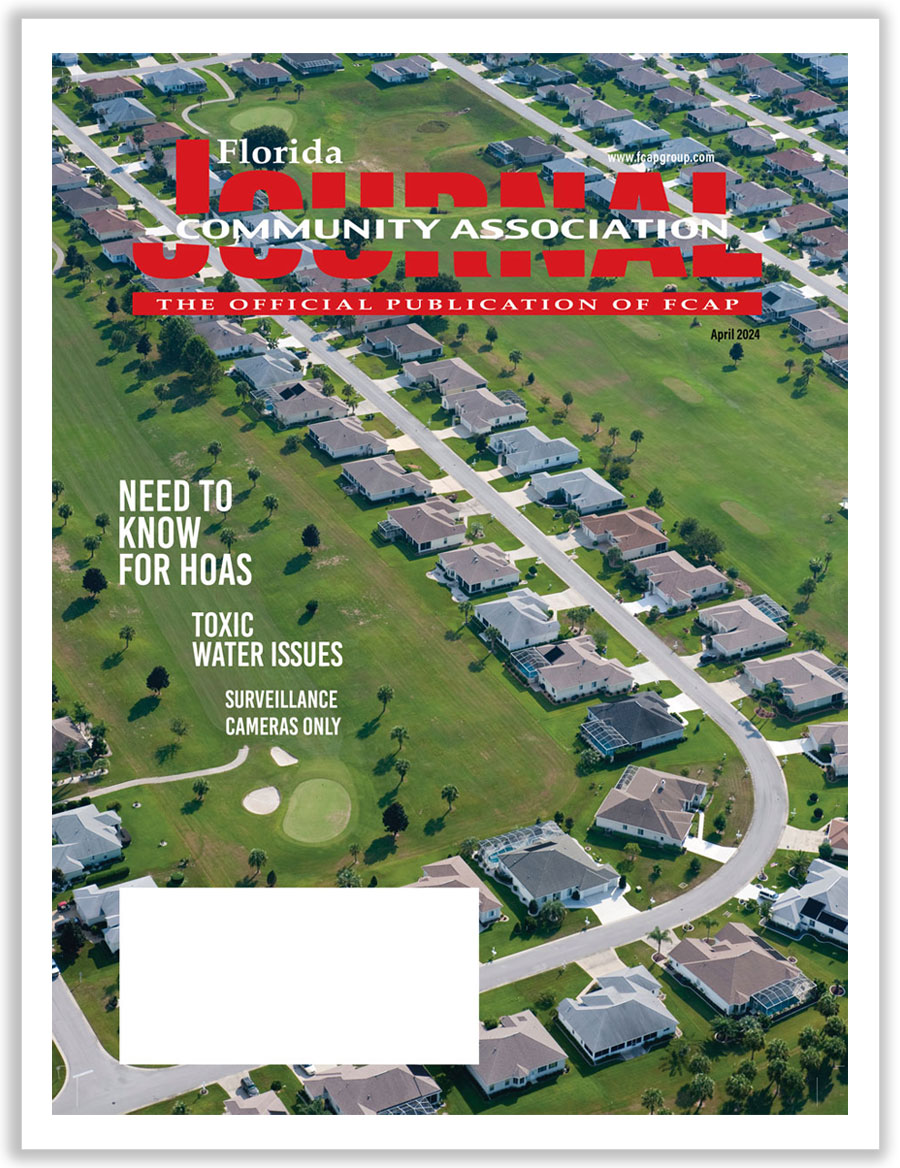
The CAM Employment Process
The Application Process
By Marcy Kravit, CMCA, AMS, PCAM, CFCAM / Published December 2021

When seeking a new position, it is important that you do your due diligence to ensure you are professional and following proper protocols. Do your homework before applying. Visit the company or association’s website. Can you do additional research to find out the details about the association and/or company? Can you find out why the position is available? Are there any employee issues? Turnover of staff? Employee retention information?
It is a known fact that there is a shortage of CAMs across the country. My goal has always been to raise the level of professionalism in the industry. I want to bring awareness and mentor new and existing CAMs in sharing what it takes to be a manager and the dos and don’ts regarding the hiring and application process.
I have interviewed a well-known recruiter, Linda Di Ciaccio, owner of CAM Recruiting, who has been in the industry for over 30 years. For employers, her company’s screening process along with analytical interviews are proven techniques. For CAMs, her company gives you the tools to succeed with insight and perspective for positive, real-life outcomes. CAM Recruiting delivers talent solutions to match your hiring needs. Matching the right manager to a community association is essential. CAM Recruiting can be visited online at www.camrecruiting.com.
Di Ciaccio explains that there are many different philosophies involved in a job search. She says, “This is my life! I try keep up to date and participate with tons of HR professional organizations. I am part of a nationwide coaching organization that seeks to benefit CAMs as management companies and boards of directors continue to demand more from their candidates. Here are some of my opinions, based solely on experience:”
- Resumes—we preach that it must pass the 12-second test with 4 Cs: Clear, Concise, Compelling, and Cliché-free!
An employer will look at it for two to three seconds to determine if he or she wants to read it, then take three to four seconds to look at the top third. If it is visually pleasing to look at and the summary statement is compelling, an employer will take another five to six seconds to scan for titles and dates of employment, amounting to a total of about 12 seconds!
If it passes 12 seconds, chances are greater that it will be read carefully for consideration. Cringe-worthy statements like, “detail-oriented, punctual, reliable, proactive, results-driven…” should be avoided.
Let’s face it, if you don’t possess these basic qualities, you are probably not very employable!
- Cover letters must always be addressed to a person or keep the salutation generic.
- The job search is most successful when candidates apply directly on the employer’s website, not through job boards.
- Applications must be completed, without any blanks and with accuracy. A resume is only a sheet of paper that often includes some hyperbole or overstatements. The dates of employment sometimes are stretched or exaggerated…an application, on the other hand, is a sworn testament to the information being provided as truthful! It is a signed affirmation of the contents being true!
- Interview Process—nearly all initial interviews are virtual. I have an entire workshop dedicated to the virtual interview.
I don’t agree with posting a resume on a job board. I feel that it cheapens a candidate’s professionalism and that only the lowest level of employers goes this route. Most employers tend to see candidates’ resumes posted online as those who are less desirable candidates. These are just some of my basic thoughts…I could bore a librarian with employment conversation!
As a CAM for over 20 years, here are my tips and tricks when applying for a CAM position:
- Only go for the job openings that you are really interested in. Ask yourself, “Why am I interested in this job?” Carefully review the job posting and skill set to ensure it is the right fit.
- Cloud storage such as Google Drive, Dropbox, OneDrive, etc. is the answer to having everything you need at your fingertips. When applying for a job, store everything necessary in the cloud. Storing your documents in a cloud storage platform makes it easier for you to access them even when you’re away from your computer as these can be opened on your phone. Download the Microsoft Word and Excel app on your phone to review and edit documents. Download the apps for all job search engines, GlassDoor, Indeed, Zip Recruiter, Simply Hired, etc.
- Make a schedule and use your electronic calendar on your phone and computer. Google and Outlook calendars work well in setting up appointments and reminders. You can also track important deadlines and interviews so that you don’t miss a thing!
- Turn job alerts on. Job search networking sites have a feature where they can email job alerts straight to your email or phone, depending on your permissions. Turn these on so that you never miss a job recommendation. Job search sites use information you have provided them such as skill level, expected salary, languages spoken, and location to match you with the perfect job opening.
- Update and optimize your resume for the position. Use a recruiting firm to draft your resume or use a template to start. It will save you time from starting from scratch.Tailor fit the design and details to make it your own. By optimizing your resume to fit each job application, you’ll be able to increase your chances of getting noticed and chosen by recruiters.
- Maintain spreadsheets and checklists. Create an Excel spreadsheet in the cloud to track your job search. List the application date, company, and status, (i.e., submitted, awaiting response, in progress, pending scheduling an interview, etc.).
- Use social media in your job search. LinkedIn and Facebook have tools that can help to assist you with your job search and to present a positive and professional image. You should display your LinkedIn profile just as if it were a resume. It demonstrates to potential employers that you have some technological skills and understand social media trends.
- Social media helps you network and connect with hiring managers and recruiters. According to www.talentworks.com, 87 percent of recruiters reported using LinkedIn to source candidates, and 55 percent use Facebook. Clean up your existing accounts. Make sure your existing accounts are employer appropriate. Delete or hide posts that may appear to be offensive or inappropriate. Make sure you have a professional head shot and posts related to your career or information are related to the industry.
- Your internet image is your advertisement of you! Google yourself to learn if there is information out there about you that may become an issue. Fix the issue before a potential employer sees it.
- According to a 2018 survey by CareerBuilder, seven in ten employers (70 percent) use social networking sites to research job candidates during the hiring process.
- Nearly half of employers (48 percent) check up on current employees on social media. A third of employers (34 percent) have reprimanded or fired an employee based on content found online. Highlight your certifications, special skills, awards, education, organizations, and experience. Check your privacy settings.
Once you have your profile, cover letter, and resume in place, these steps will assist you with the application process and let your skills shine! In Part 4 of this series, “The CAM Employment Process,” we will cover the interview process.
Marcy Kravit, CMCA, AMS, PCAM, CFCAM
Education Program Director
Marcy Kravit has 20-plus years’ experience managing community associations in South Florida. She has established a reputation as being passionate about service, driven by challenges, and undeterred by obstacles. Marcy is committed to providing five-star service and educating others in raising the level of professionalism in the industry. She works for Hotwire as director of community association relations. Marcy has earned every higher education credential offered by CAI and is recognized by Florida Community Association Professionals (FCAP) as a CFCAM. Marcy is a contributing writer to the Florida Community Association Journal (FLCAJ) and serves FCAP as their Education Program Director.
This article is part of a multi-part series as an overview of the CAM profession and the employment process.




